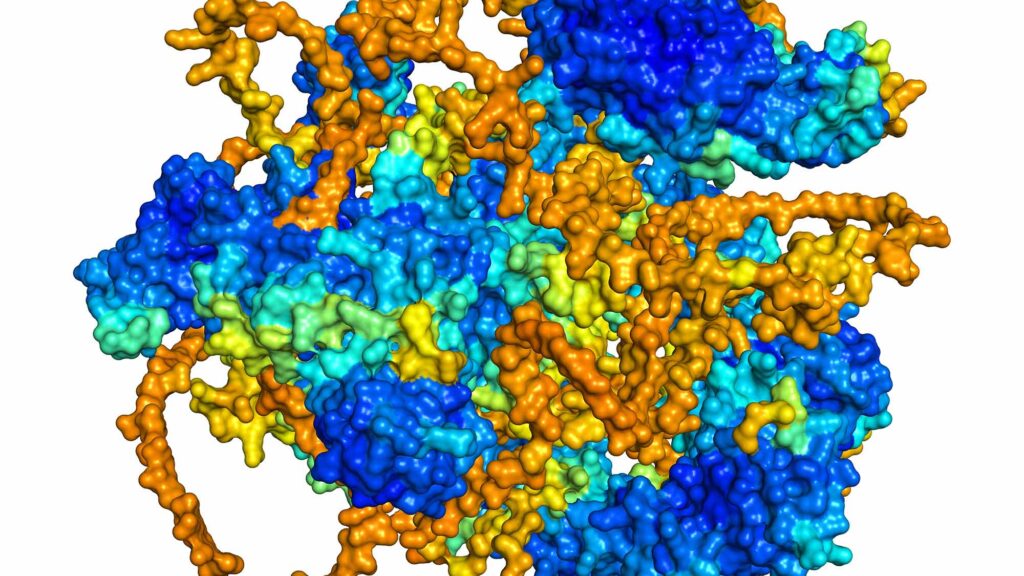Two professors and a doctoral candidate have combined their expertise in chemistry and computer science to conduct research that could one day lead to treatments for cancer and Alzheimer’s. Their research could be used in the future as a model system for engineering proteins that manipulate the information pathway for targeted drug degradation.

“This enzyme has to undergo large conformational change.”
The researchers—Shuanghong Huo, a chemistry professor and the Carl J. and Anna Carlson Endowed Chair in chemistry; Li Han, professor of computer science; and Tianyi Yang, a Ph.D. candidate in chemistry—examined information pathways specific to the E3 enzyme.
Information can travel from one end of a protein to the other end along multiple paths, similar to a network of roads. “You can see if there are common pathways,” says Huo. “Because there are multiple pathways, we look at whether there’s traffic or a bottleneck.”
E3 is the third in a trio of enzymes that transfers ubiquitin, a small protein, to a target protein for recycling, a function that removes unnecessary proteins from a human cellular environment. Ubiquitin acts as a tag, essentially labeling proteins that must be recycled. “This enzyme has to undergo large conformational change,” Huo says. “It’s like one hand holds the ubiquitin and the other hand holds the target protein to be recycled. To bring these two together, you create the tag to the protein.”
Amino acid is crucial for the information to pass, but their residues in the information pathways are similar to traffic bottlenecks. The team sought to discover how information could pass through multiple domains if the target protein is located on the other end of the E3 enzyme.
Using Han’s knowledge of graph-theoretical approach, the group analyzed information pathways by plotting all the avenues and looking for common networks. Their research could be used in the future as a model system for engineering proteins that manipulate the information pathway for targeted drug degradation. That means it could apply to mutations that cause blood cancer or Alzheimer’s disease.

